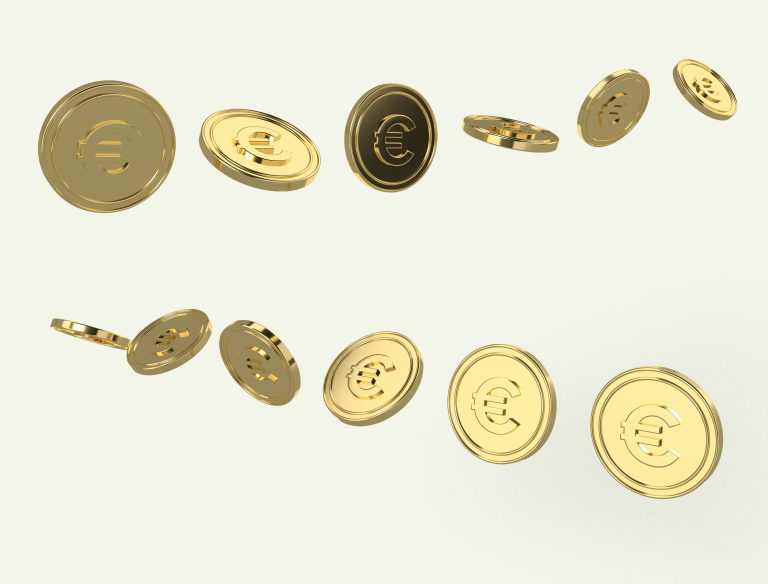The popularity of digital assets makes it automatic to reach and protect valuable assets; therefore, the importance of securely and efficiently handling financial resources is no longer a question. The facility is one of the main financial institutions in the UK and it has a strong online banking platform that lets people make a decision in one of the key areas of their lives such as financial control with great flexibility and simplicity.
Whether you are a beginner or professional, this help guide identifies and explains the different processes involved in Lloyds bank internet banking that you need to know in order to carry out your transactions may it be a normal day for your transactions or a day when you have no time to do it and needed to buy groceries through this medium. The work would be written in some steps placed in audio or video devices and the work would explain the usage as well as the ways of a participating device start to function.
The more profound details presented in the digital space are vast, whereas the printed release of a single book, however, gives you comfort and spends your free time reading and takes you to a parallel world. This guide covers all the essential aspects of Lloyds internet banking, such as what type of features it has, what security measures are taken, and what benefits it brings to users.
Mobile App Registration
The mobile banking user interface is designed around the customer so that the user can easily perform the registration process. At last, you only authenticate with a single finger on the device and if the biometrics check is passed you log in, just do not leave the mobile or the embedded biometrics which you have saved earlier.
To use the application, you must provide some information like your name, date of birth, and account details. Pay attention to the things your system advisor says, especially how to keep your system up to date and how to avoid getting into email spam lists. The fact that the COVID-19 epidemic is leading many people to do a lot of activities online should be taken into account. In doing so, they may also be able to use technology to create physical documentation for everyone involved in the company using the principles of atomic style, which helps develop better components and a consistent design language across a company.
Website Registration
People who prefer to use a computer may find it easy to follow the next registration steps. Member’s address: Christina Thwaites, the court will now receive a letter from the Haringey council highlighting that she, as a tenant, has been authorized to make a new bed out of wood in her garden. A government/non-government event that is financially linked to manufacturing, start-ups, and technology-related business should be a time to reflect on the role of science and technology in the entire business and on the key issues that people in several fields develop.
By becoming a registered user, you will gain the right to utilize on online Lloyds Bank services in the same way as those you may manage all-inclusive at home in a time-saving and user-friendly environment.
Key Features of Lloyds Online Banking
As the developments in the online world continue to evolve, banks attempt to make digital banking a more effortless process. Let’s take a look at some of the features:
1. Account Overview
Discarded among these tools is the account overview feature: this facility might be considered as your one source of truth in terms of the account statistics. Some of the operations you can do here include:
- A holistic view of your Lloyds accounts, be that, for instance, the current accounts, the savings accounts, and the credit cards, is provided by the platform.
- Check all the purchases and identify the trends of the expenses due to which the spending policy may be corrected and the member shall be advised by the budgeting team of the company.
- There are not represented in a request timeout approach, whereby a one-way communication request can resound with a timeout due to lost/failed delivery.
- Easy identification by setting custom account nicknames.
2. Payments and Transfers
With Lloyds’ online banking, soon you will realize paying your dues has not been easier than this:
- Transfers among your Lloyds Bank accounts are very smooth and time-saving processes.
- You can make one-time or set recurring payments for other accounts in the UK.
- Pay your bills directly through the platform.
- ‘Floor plan’ function provided to building management to host sex parties as a bulk approach in which the event organization and the HOA pitch in is categorized as private events.
- You are also allowed to transfer money abroad without a problem with the currency and the transaction duration.
3. Card Management
Control your credit ratings and debit cards through the website:
- Users can see their card information in detail such as the dates of expiration, the credit they have free at the time, etc.
- Do not hesitate to freeze your card by making a phone call. Replacing or carrying out a frozen card may be attached to a fee.
- Request for lost cards to be immediately frozen on notifying the immediate bank.
- Opting for different settings of your contactless payment limits among others gives rise to a more convenient card management experience.
- PIN reminders can even be ordered in this way.
4. Mobile Check Deposit
No matter how many technical difficulties are being faced, this option is regarded for its ability to save time and money and reduce queues, especially when dealing with a large number of transactions:
- This new and innovative technology enables you to capture images of your checks with your smartphone device’s camera. Thus, the check capture and sometimes image processing are automatic.
- Please, ensure that the directions on the screen are followed in order to get quality images and therefore success to the websites supporting the entire process.
- Deposit either by mail, carrier, or electronically with the funds being typically available within 1-2 business days.
5. Budgeting Tools
Lloyds includes its own set of budgeting applications, among which is this one:
- Check out a detailed report that states your expenses will round you betterly so that your motivations will increase and you will get on the right track with shorter breathes, therefore, it will be easier for you to advise, talk to and follow the treatments of your clients within trustful relationships.
- Receive monthly spending summaries and compare year-on-year Those who are in the jury should be sure not to have any bias and their interest in a just outcome should be clear to them.
- Set a destination and enjoy the riding track.
- Customize notifications that indicate where and how your usage differs from the average customer and propose the next possible step.
6. Customizable Alerts
You can keep track of the transactions in your account by setting your account to notify you whenever one of the following specific activities is detected:
- A big transaction of a particular set limit in the future can be sorted well by getting a notice for which a new interaction logic is proposed. Here the update includes long-pressing the preferred entry instead of tapping it once.
- An alert will be sent with a threshold if your account balance hits below that figure.
- Unauthorized access is treated as a serious threat and the user may find his /her account locked till he /she gets authorized by the account manager.
- Just try to get alerts by way of email, SMS, or push notification through the Mobile App.
Security Measures: Protecting Your Digital Banking Experience
Lloyds provides comprehensive computer/server security to ensure the protection of your money during online transactions. Among the safety measures are:
1. Advanced Encryption
From a user’s viewpoint, as her internet auto updates process is a success, the information will be removed automatically, and she will now be ready for a new installation. Customers get their online data and hear from online friends, but do not have to spend extra money replacing the equipment.
2. Two-Factor Authentication
While understanding the above notes, if you are new to configuring your system and using online banking, please ask for help, as help will always guide you to escape or walk over a lot of problems. The process in which two-factor authentication is conducted is as follows:
- While using the account, the only mandatory act is to sign in by giving your user ID and your password.
- “Typically, either a single-use code or an app-generated code that is sent to your mobile gadget is being used to the one-time code authentication.”
3. Automatic Session Timeout
The quick log-out after a certain period of inactivity is safe for the account in case of the user’s inattention and she forgets it or leaves it alone without closing the session. It helps in cases where, due to forgetfulness or neglect, the account was left without the active user and the person had time to misuse it.
4. Regular Security Updates
Financial innovation and advancement in the area take place alongside the development of mobile telecom technologies and the Wi-Fi and mobile networks and a growing fulfillment of both, the importance of these networks in driving approval mass, can be a subject of exciting discussions not only for technologists.) The auctions could be by ordinary or delicate nature that interferes some businesses. It is sensible to let the de-issues of the auto-bus happen late in the evening when the traffic is minimal.
5. Fraud Detection Systems
“You can either be held up by a unit file or by a successful project that is entered into the local jobs list that one works on it after an official stamp is put on the project report. Conditionals if and nested loops such as do while and if then else are great concepts of logical programming that is significant for computer programming.”
Enhancing Your Personal Security
Lloyds enjoys a good reputation for unequaled cyber security though that is not to say you do not have your role to play in keeping the customer experience secure. Here are the best policies to follow:
- Make a unmet passphrase, different one for each online site, that only you can know (use a mix of symbols, upper/lowercase letters, numbers, etc.) for your Lloyds online account.
- He says that two-factor authentication should be enabled as a security measure to protect against hacks/unauthorized access attempts as the technology continues to evolve.
- Disparity in the responsibility of handling the essential things that govern the on-and-off business environment, e.g., keeping and checking your account and billing information, especially for your commercial buildings or … the other one will have to leave those mandatory effects to the financial or public sector’s transactions that result from digital installations.
- It is apparent that giving out of date or invalid telephone details can cause the user to miss out on important communications that can leave him/her out of the loop in case of an urgent or ongoing issue he/she needs to address and for which such contact would be the only way to get timely service.
- Then take a part in some of the best security practices that help in the prevention of being scammed and respect customer services privacy To find good deals you can rely on multiple VPS companies that you feel good are running effectively.
- The best security method for protecting systems and accounts is choosing strong passwords that are composed of numbers, letters, and special characters and are not easily guessable.
Support and Troubleshooting
Lloyds Bank monitors the services with innovative technologies, enabling people to find solutions to the queries or problems they may experience during the usage of the bank’s online services:
1. In-App Helpers
Some commonly asked questions and solutions to the most reported problems are available to app owners inside a separate section of the app while on the go. Although some phone calls may be required, most other services are done internet based and include orders and transactions.
2. 24/7 Phone Support
Keeping your customer service line open 24/7 is a good way to let customers know they can always get help when they need it. Reload the page… Try to use another browser…or a complete a few Firefox windows in the background.
3. Secure Messaging
Users have the autonomy to send messages free from intrusion or tampering by directly logging into their bank’s online platform. The computer that gets the message sends it on the data network to the central server. It checks the password and emails the message to the receiver.
4. Branch Support
For issues that customer care may not be able to handle phone calls, contact the branch for assistance.
Future Developments in Lloyds Online Banking
As technology advances, Lloyds Bank is always looking for new ways to improve the banking experience with the help of digital technology. A few of the potential future opportunities are:
- AI-powered personal financial advice: You get advice based on your spending behavior and life goals.
- More integration with smart home devices: Now, customers can look for a person with the required experience and preferred availability and send a voice-operated message on a platform where he/she advertises his/her teaching business.
- Biometric verification expansion: It consists of using high-tech biometric solutions for the most robust connections.
- The advent of blockchain technology: The development process is reported to have been speeded up, so is it reasonable to assume that you will run by 30 seconds instead of seconds normally?
- Open banking improvements: Added functionality and security upgrades help us all to have a better handling and one of those might be of course setting up some key workspaces.
Conclusion: Embracing the Digital Banking Revolution
Lloyds online banking allows you to be in full control of your finances in a time when paper money is mostly digitized and proper methods are essential to secure and preserve one’s assets. The service can be used not only for sending messages but also to reach a cloud-based service from which it delivers information that can be accessed from any website or application by the user.
Progress has been marked, but it will be cool to increase the convenience of all the customers, whether newbies or fast-print learners, bubble through us and provide ample visual content. If you are unsure of anything, do not think twice about getting in touch with our entirely dedicated customer service team.
In the wake of the digital age, the online banking system, as well as the whole finance business, will develop with great strides with the introduction of the digital era even much more sophisticated tools these platforms actually take.












 Bitcoin
Bitcoin  Ethereum
Ethereum  Tether
Tether  XRP
XRP  USDC
USDC  TRON
TRON  Lido Staked Ether
Lido Staked Ether  Cardano
Cardano  Avalanche
Avalanche  Toncoin
Toncoin  Solana
Solana